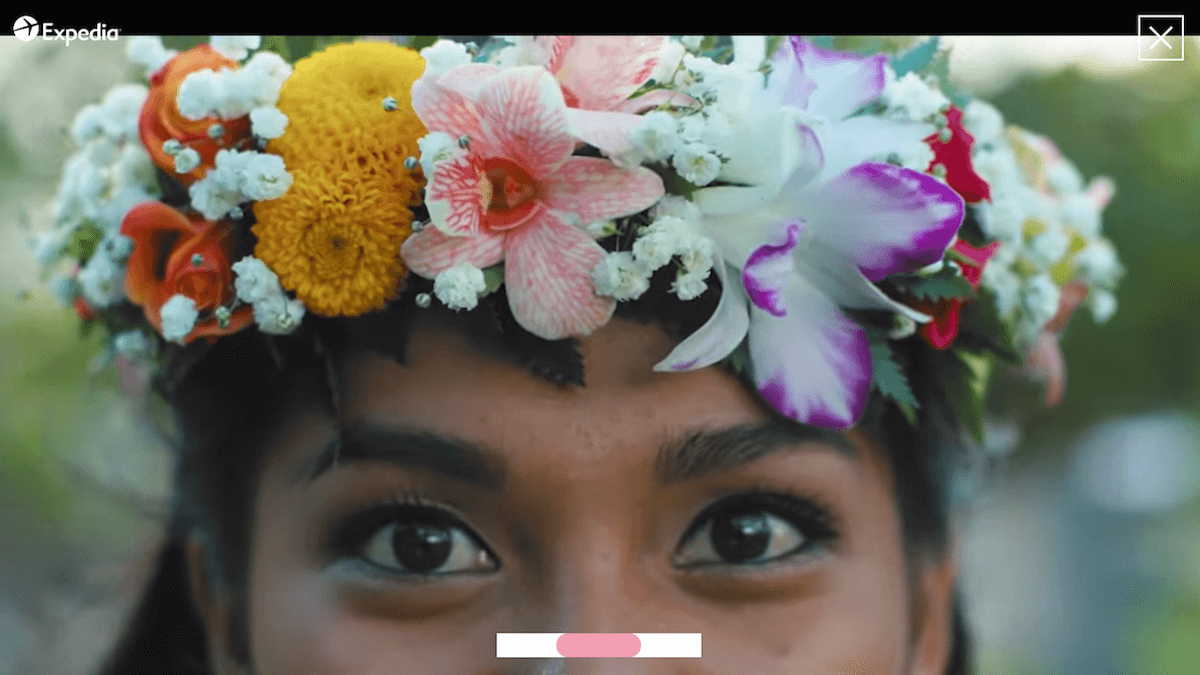Expedia.com is now letting your facial reactions help determine where you should go on vacation.
Through its Expedia Media Solutions advertising sales division, the travel site has launched a new website called “Discover Your Aloha” as part of a year-long campaign for the Hawai‘i Tourism Authority. At the site, visitors give permission for their computer’s webcam to transmit their reactions to scenes of the islands in a two-minute video, and those reactions automatically lead to a recommended, customized travel package.
Expedia’s Director of Creative Partnerships, Angelique Miller, told me that to her knowledge, this was the first use of facial recognition to inform vacation planning.
She noted that Hawaii wanted a campaign to counter its loss of market share to Asian destinations like Thailand, Vietnam and Bali. Millennials in particular, she said, are expected to respond to the “wow” factor of selecting a vacation package by your smile.
A visitor to the website first grants permission for transmitting the video from a desktop computer or mobile device to Expedia. Then the visitor lines up a green outline of a face with their actual face, which is followed by a two-minute video of various scenes from the island state. The video instructs the viewer to smile if the imagery is appealing, and a bar indicator at screen bottom indicates when you’re smiling.
The facial analysis software, developed by digital agency Realise, measures 76 points on each face. Miller said that, although the technology can measure such emotional states as sadness, surprise or happiness, for this campaign the trigger is happiness expressed as a smile.
If the viewer watches at least half of the two-minute video and has smiled what the algorithm considers a sufficient number of times, a personalized travel package is presented as a web page, along with one of three 30-second videos representing either Iwa (Bird, and Hawai‘i’s all-knowing guide), He‘e (Octopus, Hawai‘i’s loving spirit) or Pua‘a (Pig, Hawai‘i’s bold adventurer). The idea is that the scenes you found most appealing — because of your smile — indicate what kinds of activities or locations would appeal most to you in a travel package.
The packages include discounts up to 50 percent and exclusive offers from participating hotels. If the software has not captured a sufficient number of smiles, or if the viewer hasn’t watched enough of the two-minute video, a series of on-screen interactive questions with multiple answers are presented in order to understand the viewer’s preferences without facial recognition.
The technology was trained by analyzing about 3,000 faces prior to the launch, but it’s not clear exactly what is being measured or how different smiling responses to some scenes versus others might result in one travel package or another. After all, it’s hard not to smile at beautiful images of paradise.
Expedia doesn’t have any stats yet to release as to whether this approach offers better travel suggestions than, say, a good travel agent, or if it has led to an increase in vacations to Hawaii.
Facial recognition is one of several biometric techniques enjoying a boom among marketers, although most applications to date have emphasized measurement of existing campaigns instead of using expressions to inform consumer decisions.


